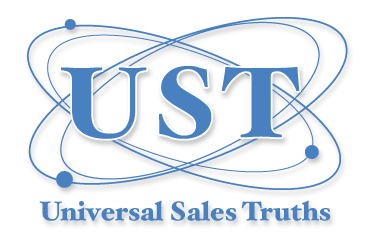My company, UST, is all about passing on the knowledge that I, along with many others who spent their careers in professional sales, learned through the school of hard knocks. The idea is to help young sales representatives avoid the mistakes we all made as we navigated the challenging world of professional B2B sales.
However, the reality is that the term “salesman” does not always have a positive connotation. Have you ever heard the joke, “How do you know if a salesman is lying? The answer: his lips are moving!”
For this reason, we never put the title “Salesman” on our business cards. In fact, I can’t remember the last time I saw a business card with that title. Even “Sales Representative” is becoming increasingly rare. Instead, we use titles like Account Manager, Territory Manager, or Account Executive. The reason is simple—people don’t like feeling as if they are being sold to. They want to believe that they made the decision to do business on their own. The salesperson is merely there to facilitate the process.
This is especially true in the high-tech world, where I worked for almost 30 years. Clients like Citigroup, GEICO, and T. Rowe Price, who were making multi-million-dollar IT decisions, did not want to feel like they were being sold to. At least, that’s what I gathered from the numerous interviews I conducted for my book. They wanted to feel as though they arrived at the decision independently, with the vendor representative simply providing valuable information and a compelling proposal.
So, the sixty-four-thousand-dollar question is: how do I represent my company and product without being perceived as a traditional salesman?
The answer, in my opinion, boils down to three key components:
Prepare – Listen – Present
Let’s take a brief look at each one.
Prepare
Before making your initial sales call, it is absolutely critical to do your homework. Research the company you are calling on—understand their industry, products or services, competitors, and financial strength. Are they a private or public company?
Next, gather as much information as possible about the executive you’ll be meeting with. Has he worked at other companies where your product had a presence? Is he motivated by service or price? Do you have anything in common with him? Perhaps he’s a golfer, skier, tennis player, or motorcycle rider. What common ground can you establish, whether from a business or personal standpoint?
The more information you gather before your initial sales call, the better prepared and more confident you will be.
Listen
On your initial call, your objective should be to determine if there is a business fit between your company and the prospect—that’s it.
If it becomes clear that there is no fit, you don’t want to waste any more of your time or your prospect’s time on a dead-end proposal. In fact, I would even be bold enough to tell your prospect that your sole purpose for this meeting is to assess whether a viable business opportunity exists. Believe me, your prospect will respect your honesty and integrity—and you certainly won’t be perceived as a typical salesman.
During the conversation, ask fact-finding questions that will help you uncover a potential business fit. Listen carefully to the answers, and based on them, ask follow-up questions.
By combining the research you did before the call with the insights gained during the meeting, you should be able to determine whether the prospect is worth pursuing. I would close the meeting by telling the client that you need to return to your office and debrief with your technical team and management. You will set up a follow-up meeting only if you believe there is a solid business fit.
Present
After digesting the information from your initial meeting and discussing it internally with your team, you are now ready to set up a follow-up meeting with the client.
Be crisp and on point about the value your product or service offers. It is critical to highlight the specific issues or challenges your prospect mentioned and explain how your proposal addresses them.
This is not the time to present a 30-slide PowerPoint on how great your company is. Instead, make it clear that you are a professional who values time—yours and your client’s—and that you only pursue proposals that make solid business sense.
Final Thoughts
This three-step approach maximizes both your time and your client’s, making it a win-win from a time management perspective. And best of all? You won’t be viewed as a typical salesman.

